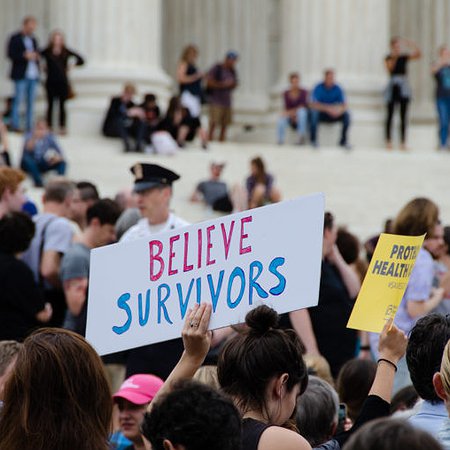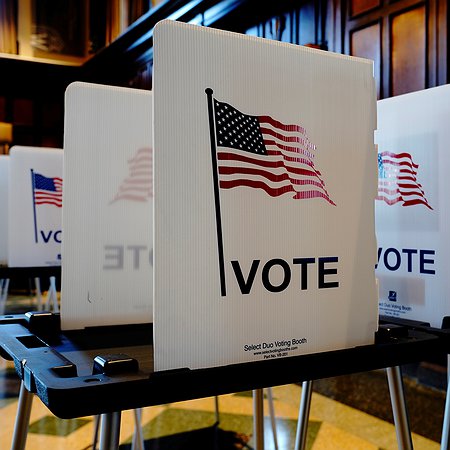Issue Briefing: Carceral Responses to Domestic and Sexual Violence
The tragic murder of an Erie County woman by her abusive partner has reignited misguided calls for carceral solutions to address sexual, domestic, and intimate partner violence (IPV). The Briefing outlines the often-devastating consequences of these carceral responses and explains why we should not rely on police and prosecutors to create better outcomes for survivors
The Briefing

The tragic murder of an Erie County woman by her abusive partner has reignited misguided calls for carceral solutions to address sexual, domestic, and intimate partner violence (IPV). Similar incidents have long predated bail reform, but leaders and policymakers have ignored preventative (not reactive) research-based interventions that address violence before further escalation at the expense of victims and survivors. Meanwhile, as experts in violence mitigation have noted time and again, carceral responses to incidences of sexual and domestic violence often pose dangerous consequences for survivors themselves.
Carceral responses affect perpetrators and survivors alike
Survivors often find themselves on the wrong end of carceral responses to sexual and domestic violence. The rate of incarcerated women has rapidly increased over the past 40 years, doubly outpacing that of men, while studies show that the vast majority of incarcerated women have experienced sexual, partner, or caregiver violence in their lifetimes. In fact, research has found that experiences of abuse are a key risk factor for incarceration among women as they often lead to more encounters with law enforcement and the criminal legal system. These encounters can often be precarious for survivors, many of whom are Black and low-income: countless women have been incarcerated for defending themselves against their abusers and even trying to protect their children from abuse. Even orders of protection can have devastating consequences, with many survivors losing their homes, jobs, and access to their children, who are often left in abusive environments—all under the guise of a policy intended to protect them.
The unfortunate reality of our current carceral response to sexual and domestic violence means that many women, particularly women of color, are reluctant to report such incidences to the police—because they don’t want to withstand the scrutiny of not being a “perfect victim,” because they don’t want to jeopardize custody of their children or their financial situation, and because they realize that the criminal legal system rarely ensures justice for survivors. Of the 31 percent of sexual assaults are reported to the police, only 5 percent of those cases lead to an arrest, and 78 percent are eventually dismissed for prosecution. Similarly, a survey of violent crime victims in California found that only 21 percent of victims received legal assistance, less than 30 percent received medical assistance or mental support, and only 15 percent received housing assistance.
Arrest-based approaches put survivors at risk
Even if reports of sexual and domestic violence were to result in more arrests, our current arrest-based approach to violence has failed spectacularly to protect those most at risk. Places with mandatory arrest laws (under the Violence Against Women Act) have seen not only higher arrest rates among women of color, but also increased criminalization of survivors who acted in self-defense. This is unsurprising, considering that the research that originally supported mandatory arrest policies has since been undermined in more recent studies, which suggest that arrests often increase the likelihood of violence in the long term.
Police weaponize tragedies—and fail to prevent abuse in their own homes
It is, perhaps, unreasonable to expect safe and just outcomes for survivors from the criminal legal system when law enforcement appears to have little interest in preventing abuse among their own ranks: compared to the general population, police households are two to four times more likely to experience domestic violence—and more than half of police officers who were found guilty still kept their jobs. Meanwhile, police frequently claim to speak for survivors and victims but weaponize the tragedies that they failed to prevent. In fact, some jurisdictions allow police and prosecutors to jail survivors for refusing to testify against their abusers, compounding existing trauma. In some instances, survivors end up experiencing longer periods of incarceration than the perpetrators of actual harm.
Pretrial diversion and community-based intervention programs show promise
Relying on police and prosecutors to address sexual and domestic violence will not produce better outcomes for survivors. Instead, we know that the safest communities are the ones with the most resources, not the highest jail populations. As Leigh Goodmark, a leading expert on gender-based violence, notes, we know that “arrest and prosecution exacerbates conditions associated with intimate partner violence, which strongly correlates with poverty. Low-income women are more likely to be victims; under- and unemployed men are much more likely to be batterers.” Preventing harm means addressing these root causes and ensuring that individuals have the resources necessary to guarantee their own safety, including financial support, affordable childcare, and access to alternate housing.
Select jurisdictions across the country have implemented voluntary pretrial diversion programs for people facing IPV charges and begun offering culturally-responsive, community-based services that limit encounters between survivors and the criminal legal system, both promising alternatives. Some restorative justice practitioners have pioneered community-based intervention models that encourage family members and loved ones to collaborate on safety plans and utilize existing relationships to engage with abusers directly to produce more sustainable and effective long-term outcomes. Early empirical results from such programs suggest that they are more effective than traditional approaches in decreasing the likelihood of new arrests among perpetrators.
Widespread data on alternative intervention models are limited, largely due to the pervasive of carceral responses to sexual, domestic, and intimate partner violence. But the data emerging— anecdotal and empirical—is promising. If anything, we should follow the lead of survivors, who, by a margin of nearly three to one, believe that incarceration makes people more likely to commit crimes, and by a margin of seven to one, prefer investments in mental health treatment to investments in jailing. Survivors aren’t putting their faith in carceral responses. Why should we?
Story Link
Original story on Erie County murder in the Albany Times Union








